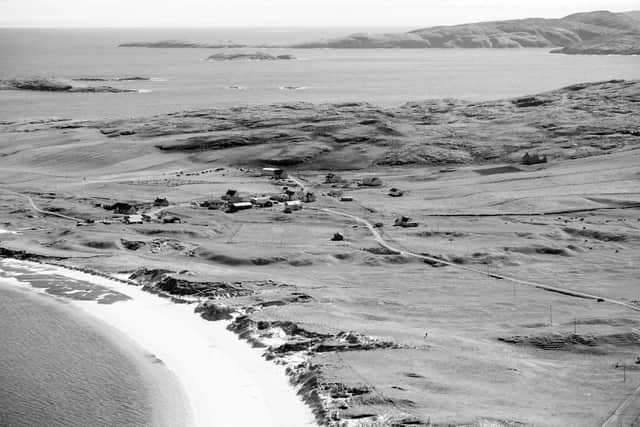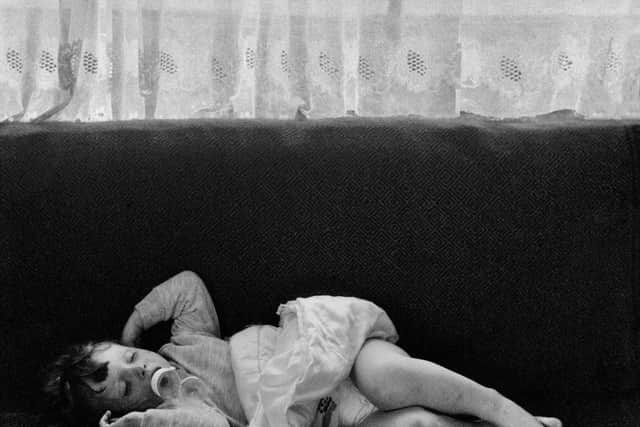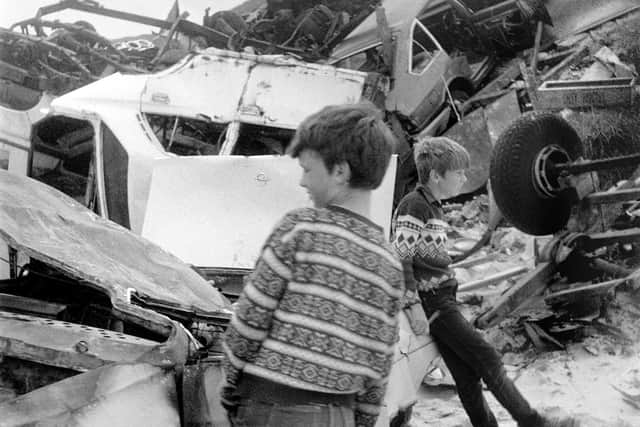The London boy who "came alive" on a Scottish island and his fond tribute to its people


Now, Glazier is to publish a book of his images that illustrate the deep connection he has made with the landscape and its people over 40 years.
Vatersay, the most southerly inhabited isle of the Outer Hebrides, is today home to around 90 people.
Advertisement
Hide AdAdvertisement
Hide AdGlazier first visited aged 12 along with his school priest and two other pupils from Glasgow with hopes that island life would give them a different take on the world.


In Glazier’s case, that change of angle made him feel like he was “coming alive” as he walked the wild landscape and visited the homes of islanders with the priest for tea and sandwiches.
Glazier said: “Everything to me just felt more real to me on Vatersay rather than this claustrophobic, suburban existence I had in Wimbledon.
“It was a real release from an environment that I was not that happy in and to be welcomed in by these wonderful people who were the most genuine, down to earth people I had ever met, was just amazing.


“They were all incredibly warm and they took me in. It just wonderful to feel so welcomed by these great characters.
“Wimbledon was very stifling, quite an oppressive place and then there I was going into this amazing wild landscape and visiting these people in their homes. I felt like I was coming alive.”
Throughout his teens, twenties and early thirties, Glazier returned to Vatersay every year. A move to Amsterdam, where he still lives, meant for a while that trips became a little less regular with the photographer managing to resume his annual trips over the last decade or so.
At first, it was the landscape of the island that mattered to Glazier but the importance of documenting the islanders against the passage of time first started become clear at show of his work in 2010 at Dualchas, the heritage and culture centre at Castlebay on Barra.
Advertisement
Hide AdAdvertisement
Hide AdHe said: “Those early photographs of people were so wonderfully received it made me realise that it was much more important to capture something of time passing. Landscapes in the main stay the same but the value of a portrait became very apparent.”
He has now photographed the children and grandchildren of some of his early subjects.
One picture taken of a baby girl, Jennifer, when she was asleep at her grandparents house in Vatersay Village, led Glazier to take pictures of her with her own children in later years, for example.
While always met with a warm welcome, Glazier said it has been a “slow process” to get islanders comfortable with being photographed. Some have walked “very quickly in the other direction” if they see the photographer getting his kit out.
He said: “I have had conversations with older people and, while they are very warm, they are also very proud. They don’t want to be looked as something quaint, something primitive or something of a curiosity. But they have come to know what I am about and it is about my connection with them and the place, which has meant so much to me for so much of my life.”
Glazier, who has raised funds to publish his book through a kickstarter campaign, has dedicated his book to the late Father Peter Banyard SJ, who first took him to the island, and the islanders themselves.
He said: “I think what I have done on the island is valued there. Certainly, the biggest affirmation I have had is walking into someone’s house, and I see one of my portraits hanging on the wall.”
Island Tides will be published later this year by Bluecoat Press. His work will go on show at the opening exhibition of new-look Rockfield Centre in Oban next month.
Advertisement
Hide AdAdvertisement
Hide AdFor more information about the book and the kickstarter campaign, visit www.kickstarter.com.
A message from the Editor:Thank you for reading this story on our website. While I have your attention, I also have an important request to make of you.With the coronavirus lockdown having a major impact on many of our advertisers - and consequently the revenue we receive - we are more reliant than ever on you taking out a digital subscription.Subscribe to scotsman.com and enjoy unlimited access to Scottish news and information online and on our app. With a digital subscription, you can read more than 5 articles, see fewer ads, enjoy faster load times, and get access to exclusive newsletters and content. Visit https://www.scotsman.com/subscriptions now to sign up.
Our journalism costs money and we rely on advertising, print and digital revenues to help to support them. By supporting us, we are able to support you in providing trusted, fact-checked content for this website.
Joy Yates
Editorial Director